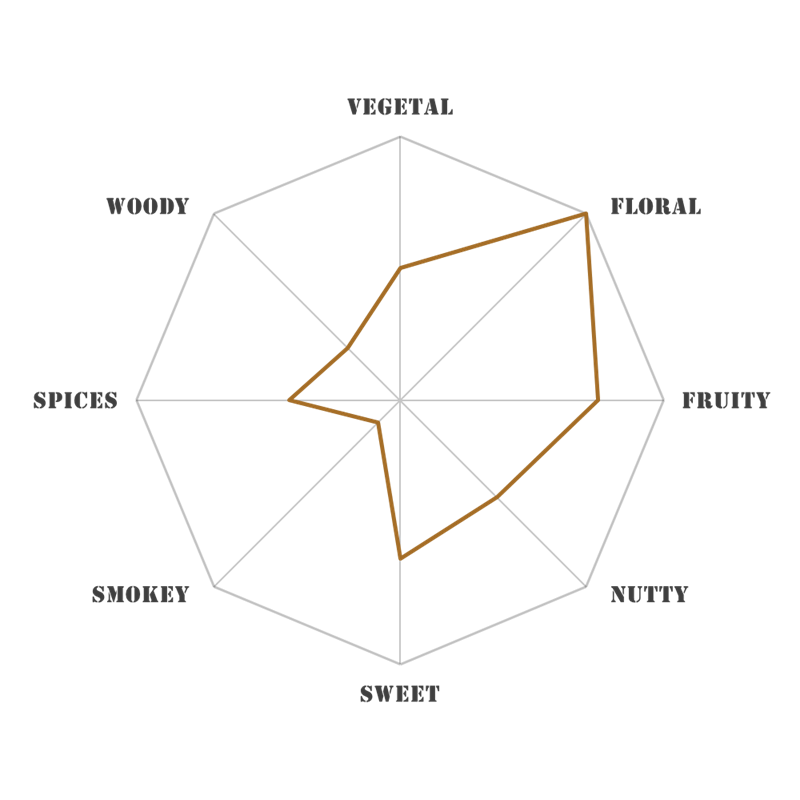This tea strikes a lovely balance between sweetness and acidity. The osmanthus flowers give a fruity edge, without being overpowering. The variety used is Jin Gui, which translates as Golden Osmanthus, and gets its name from the colour of the flowers. It is also said to have the strongest fragrance among all the varieties. Osmanthus flowers are harvested late summer to early autumn. From there, the process is similar to that of jasmine scented teas, except that at the very end, dried osmanthus flowers are added back in with the tea leaves in order to enhance the visual appeal of the final product. In contrast to jasmine, osmanthus does not produce bitter notes when brewed, which is the main reason why it can be left in. When pouring, we recommend using a strainer to help catch any small flowers that may escape through the teapot spout or gaiwan. As with most green teas, this one is also an excellent choice for cold brewing.
Overview
Origin
● Harvest: 1st week April 2021
● Location: Sanxia, New Taipei City, Taiwan
● Altitude: 300-500m
● Cultivar: Qing Xin Gan Zai
Processing
● Method: hand-picked
● Pluck: bud plus 1-2 leaves
● Oxidation: 0-10%
● Roast: none
Tasting notes
Appearance
● Dry leaf: twisted and wiry wholes leaves, cypress green colour, golden osmanthus flowers
● Wet leaf: unfurls fully, unbruised
● Liquor: flax colour, pale yellow hue
Aroma
● Dry leaf: quince, water cress, tarragon
● Wet leaf: apricot, strawberry jam
● Empty cup: cardamom, grapefruit
Flavour
● Taste: almond, sweetcorn, cherry pit
● Aftertaste: ginseng, lavender
● Mouthfeel: coating, dry, medium astringency

Brewing tips
The following tips are for your guidance.
Please feel free to adjust to taste.
Gongfu style
● 3-4g per 100ml at 80-85°C (175-185°F)
● 20-30 secs for 1st steep
● add 5-10 secs for each re-steep
● 3-5 steeps total
Western style
● 0.8-1g per 100ml at 85°C (185°F)
● 2 mins for 1st steep
● add 30-60 secs for each re-steep
● 2-3 steeps total







